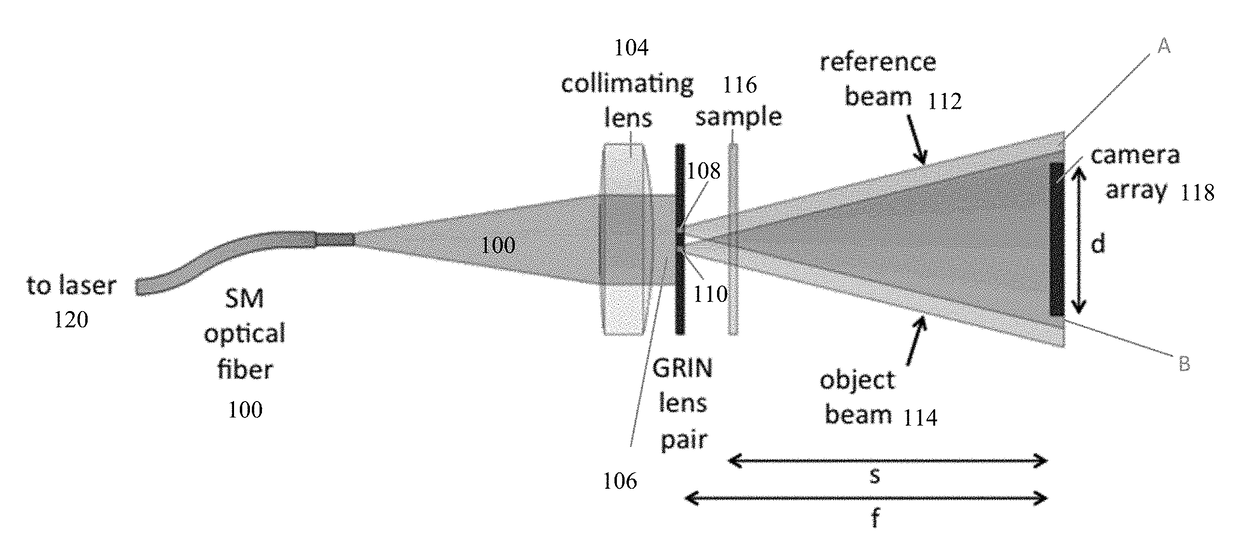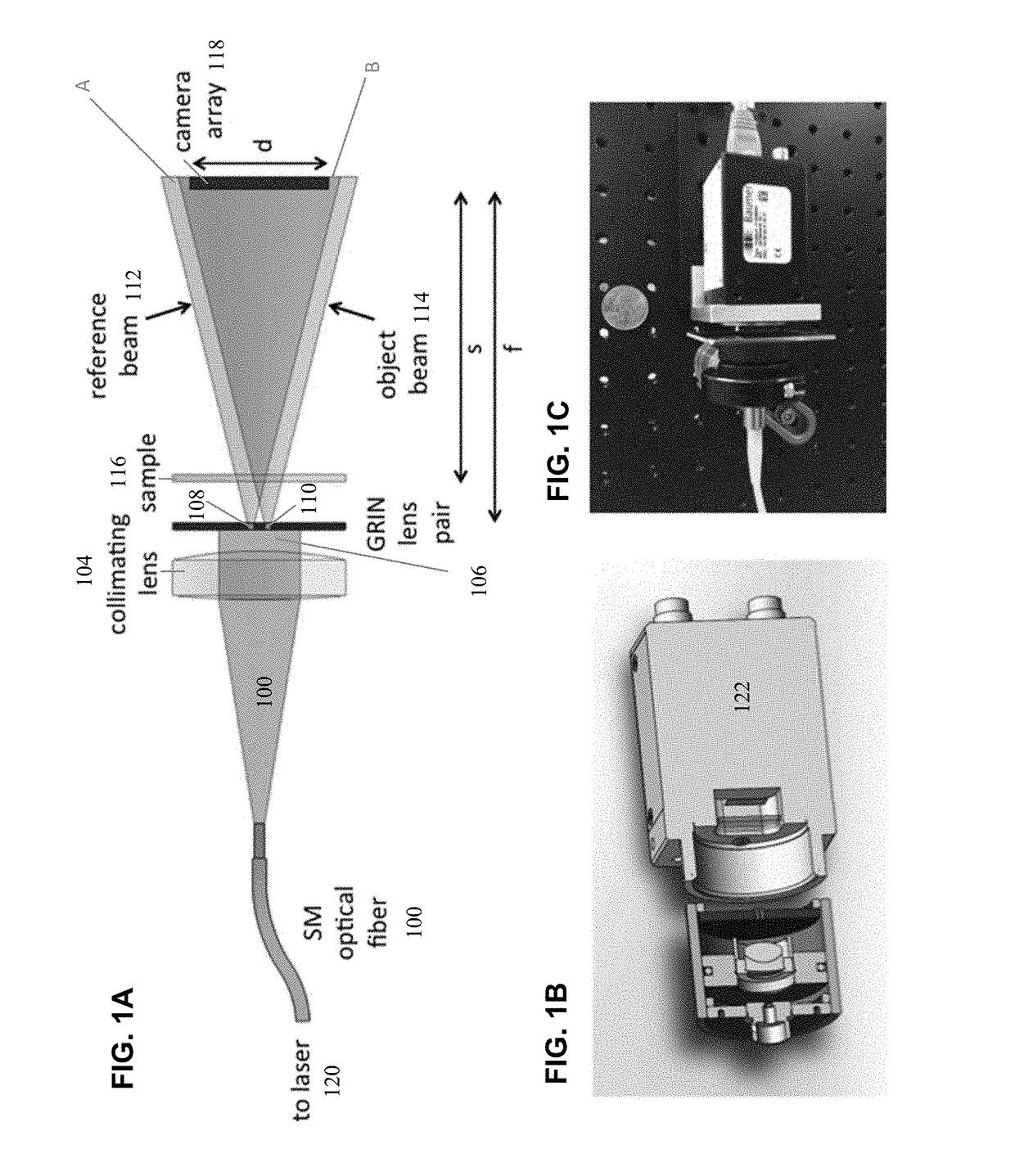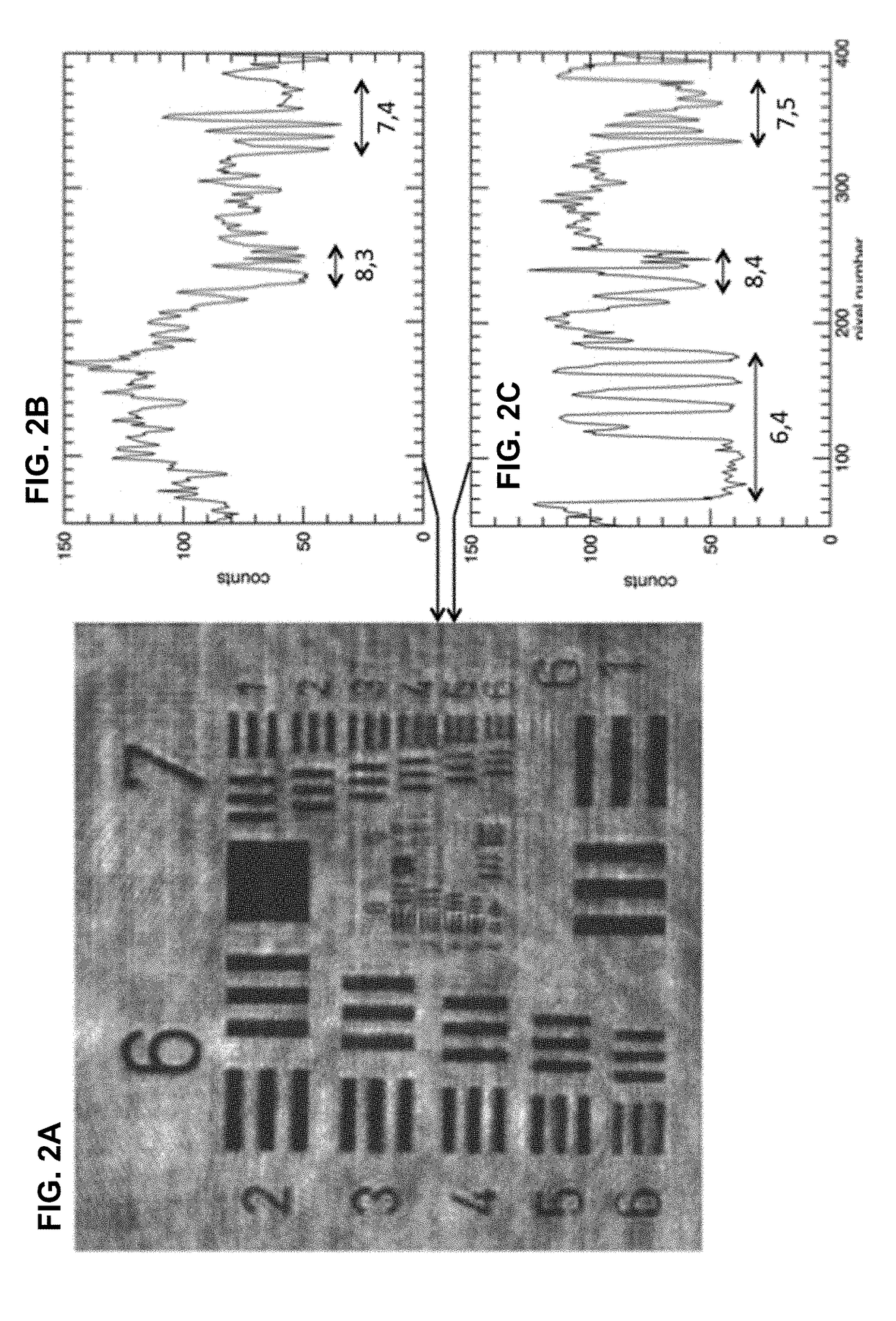Compact digital holographic microscope for planetary imaging or endoscopy
a planetary imaging or endoscopy technology, applied in the field of compact digital holographic microscopes for planetary imaging or endoscopy, can solve the problems of difficult direct observation of prokaryotes (bacteria and archaea) in their native environment, complex objective lenses with tight alignment tolerances, and limited depth-of-field of conventional high-resolution microscopes capable of imaging bacteria
- Summary
- Abstract
- Description
- Claims
- Application Information
AI Technical Summary
Benefits of technology
Problems solved by technology
Method used
Image
Examples
Embodiment Construction
[0037]In the following description of the preferred embodiment, reference is made to the accompanying drawings which form a part hereof, and in which is shown by way of illustration a specific embodiment in which the invention may be practiced. It is to be understood that other embodiments may be utilized and structural changes may be made without departing from the scope of the present invention.
Technical Description
[0038]I. Example Digital Holographic Microscopy with GRIN Lenses
[0039]In lensless holography, reference and source beams directly illuminate the detector array, without any intervening optics. However, as in standard microscopy, high-resolution holographic microscopy also requires high NA, as the linear resolution is still given by λ / (2NA). High-NA laser beams must then be launched from just in front of the detector array, i.e., from a distance, f, of ≈1-3 cm for a typical cm-scale array. Moreover, in the off-axis holography case, the fringes on the detector array due t...
PUM
 Login to View More
Login to View More Abstract
Description
Claims
Application Information
 Login to View More
Login to View More - R&D
- Intellectual Property
- Life Sciences
- Materials
- Tech Scout
- Unparalleled Data Quality
- Higher Quality Content
- 60% Fewer Hallucinations
Browse by: Latest US Patents, China's latest patents, Technical Efficacy Thesaurus, Application Domain, Technology Topic, Popular Technical Reports.
© 2025 PatSnap. All rights reserved.Legal|Privacy policy|Modern Slavery Act Transparency Statement|Sitemap|About US| Contact US: help@patsnap.com



